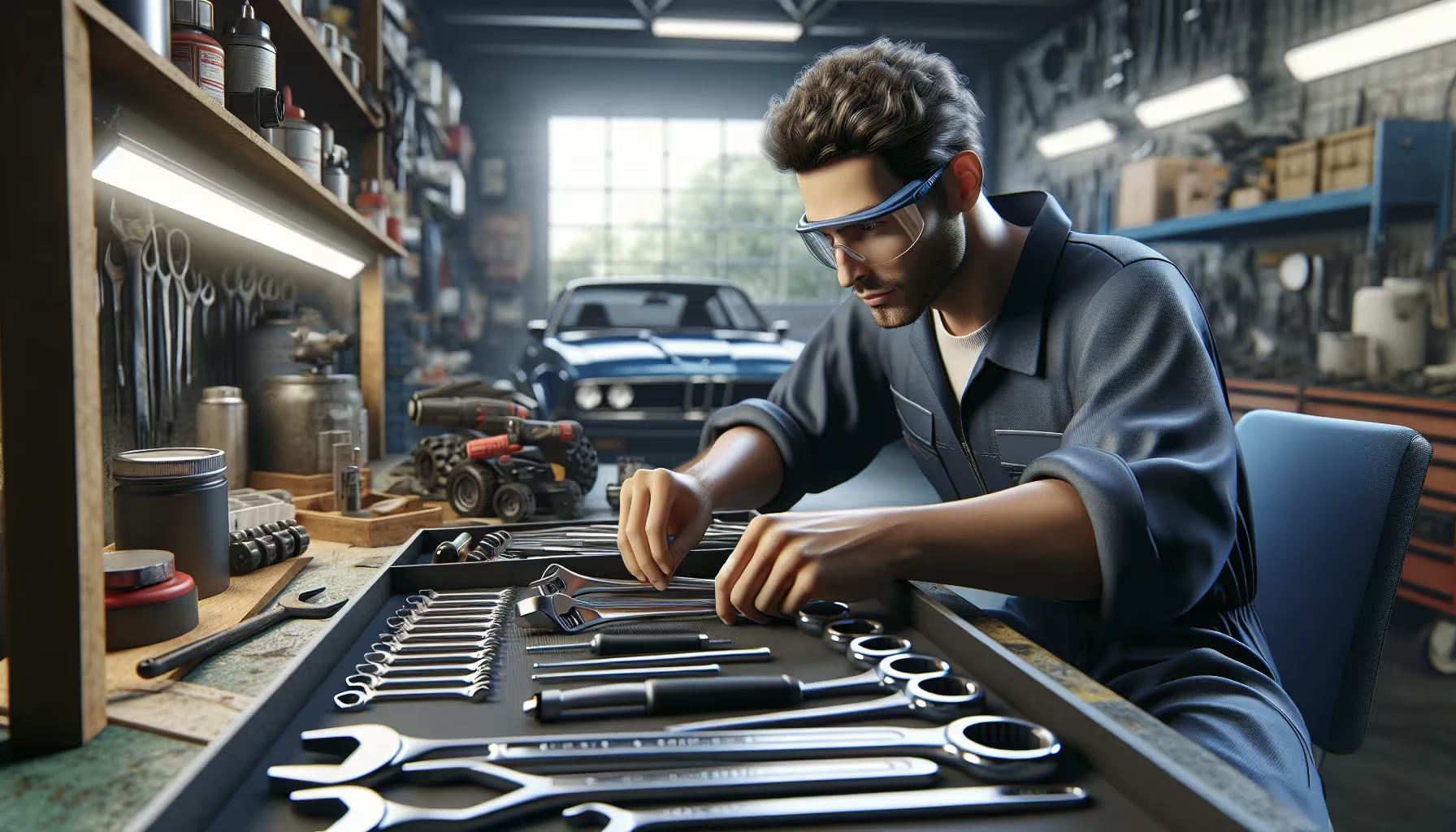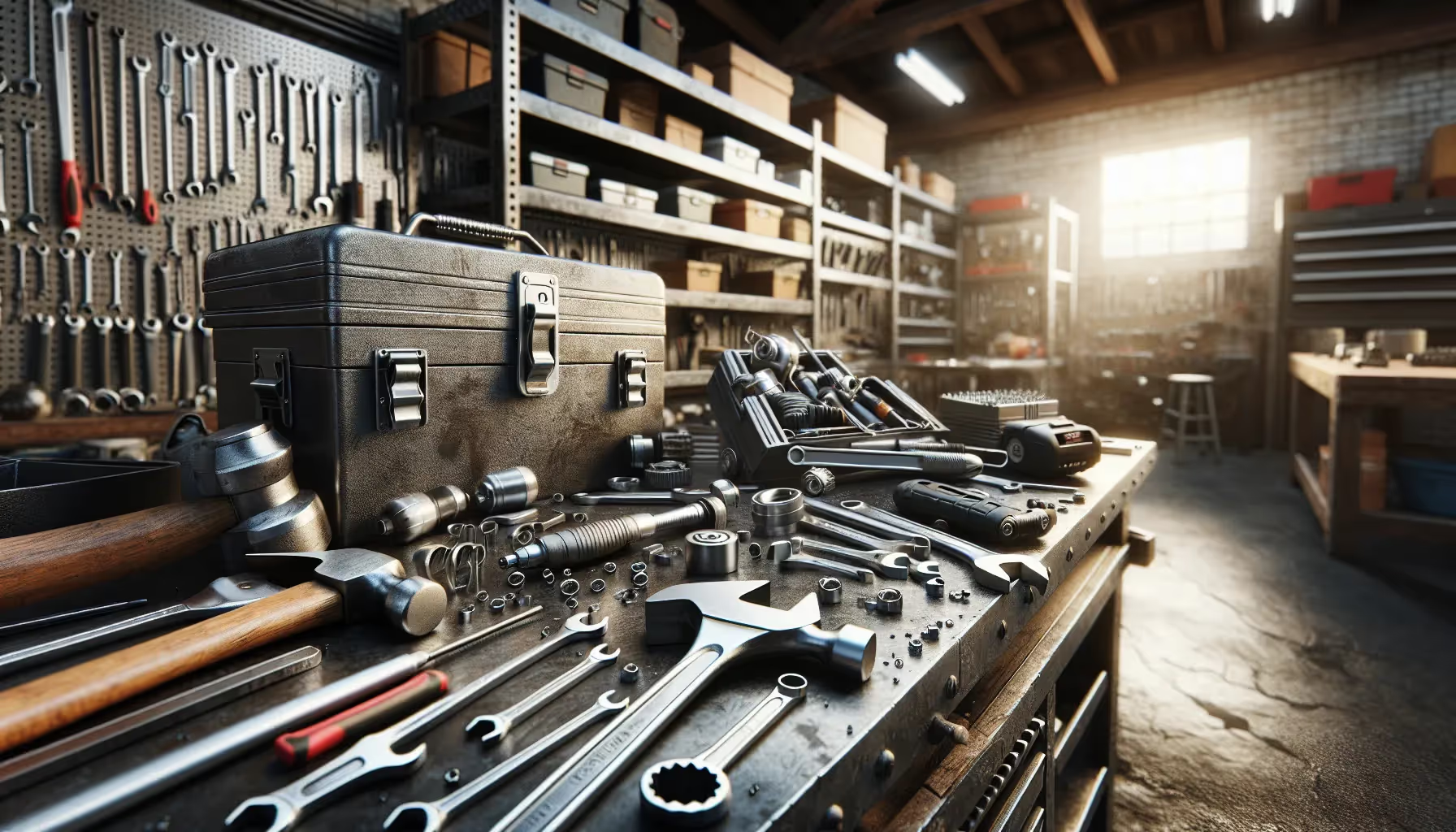Key Takeaways
- Durability is Essential: Choosing durable tools significantly impacts productivity and reduces costly downtime, particularly in high-demand work environments.
- Material Matters: The selection of materials (such as steel, aluminum, or plastic) plays a critical role in a tool's longevity and performance, affecting their resistance to wear and tear.
- Performance Evaluation: Understanding various testing methods (like hardness tests and cyclic corrosion testing) helps in assessing a tool's reliability and suitability for specific tasks.
- Manufacturer Specifications: Pay attention to durability ratings, material composition, and compliance certifications to make informed choices about tool durability.
- Maintenance Practices: Regular upkeep and proper storage are crucial for extending a tool’s lifespan and preventing premature wear from harsh conditions.
- Identify Your Needs: Assess the operating environment and task requirements before selecting tools to ensure they are equipped to handle specific challenges effectively.
In today’s fast-paced work environment, having durable tools is non-negotiable. Did you know that nearly 30% of professionals report equipment failure during critical tasks? This not only hampers productivity but can also lead to costly downtime. We all know that investing in high-quality gear pays off in the long run, but how do we ensure we're making the right choices?
Evaluating tool durability is essential for anyone relying on equipment for daily use. From construction sites to service industries, our tools face wear and tear that can significantly impact performance. In this article, we’ll explore key factors to consider when assessing durability and provide tips on selecting gear that stands up to the challenges of everyday demands. Let’s dive in and discover how we can make smarter choices for our work.
Understanding Tool Durability
Evaluating tool durability plays a vital role in choosing equipment that withstands daily use. Various factors impact durability, including materials, design, and maintenance. The right tools empower us to tackle challenges efficiently.
Importance of Durability in Tools
Durability directly affects productivity in our work. Imagine relying on a tool that consistently breaks down during important tasks. Nearly 30% of professionals deal with equipment failure, resulting in wasted time and resources. Tools that can endure wear and tear help maintain workflow and reduce downtime. Choosing durable gear leads to operational efficiency, strengthens our position in competitive industries, and enhances our ability to adapt to challenges.
Common Materials and Their Durability
Different materials provide varying levels of durability. Steel, for instance, offers strength and resistance to impacts, making it a common choice for heavy-duty tools. Aluminum is lightweight and resistant to corrosion, ideal for portable tools. Plastic provides flexibility and insulation but may not withstand high-pressure applications as well. When evaluating durability, consider the intended use of the tools and the environments they'll face. Selecting tools made from the right materials helps optimize performance in the field, ensuring our mobile workforce management remains efficient and productive.
Evaluating Tool Performance

Evaluating tool performance is crucial for selecting durable gear that can withstand daily demands. We’ll explore essential methods to assess tool reliability and functionality.
Assessing Material Quality
Material quality heavily influences a tool's performance. We utilize various tests to evaluate this aspect:
- Hardness Tests: Tests like Rockwell hardness measure how resistant materials are to permanent deformation. Stronger tools typically have higher ratings.
- Nanoindentation: This method assesses the mechanical properties of thin or hard coatings. It provides insights into how materials respond under pressure.
- Cyclic Corrosion Testing: This simulates real environmental conditions, evaluating resistance to corrosion. Tools that hold up under this testing often face tough field conditions better.
Understanding these testing methods helps us choose tools that are more durable and effective in our everyday tasks.
Understanding Manufacturer Specifications
Manufacturer specifications can clarify a tool’s durability. We pay close attention to the following details:
- Durability Ratings: We look for specific ratings that indicate how well a tool can withstand wear.
- Material Composition: Knowing the materials used in construction helps assess expected performance. Durable metals or high-quality plastics often stand the test of time.
- Certifications and Compliance: We confirm that tools meet industry standards, like those from OSHA. Compliance often indicates a commitment to safety and durability.
By understanding specifications, we make informed choices that positively affect our work. We should always question the tools we choose. Are they built to last? Do they stand up to the test of time in our demanding environments?
Factors Influencing Tool Longevity

Evaluating tool durability involves understanding various factors that impact longevity in daily use. Key elements include materials, environmental conditions, mechanical loads, and the frequency of use and maintenance practices.
Usage Frequency and Conditions
Tools exposed to frequent use or harsh environments can deteriorate more quickly. High usage places significant strain on equipment, leading to wear and potential failure. For instance, tools used daily in a construction site face different challenges than those utilized occasionally in a home garage. Analyzing these conditions assists us in predicting tool lifespan and scheduling replacements. We should consider how often and where a tool is used for optimal performance. Do we know the environment our tools work in? It’s worth reflecting on whether we’ve chosen the right tools for our specific tasks.
Maintenance Best Practices
Proper maintenance extends the life of tools, helping us avoid premature wear. Regular cleaning, lubrication, and inspections play vital roles in keeping gear in peak condition. Estimating the impact of neglect can be startling; a small piece of debris can cause significant damage if ignored. We recommend storing tools in dry locations, free from moisture that promotes rust. Are we dedicated to inspections, ensuring we catch wear before it leads to total failure? It might take a few extra minutes, but regularly checking tools saves time and money in the long run.
By focusing on these factors and best practices, we position ourselves to choose gear that meets the demands of daily use and supports our work environment effectively.
Choosing the Right Gear

Choosing the right gear starts with understanding our specific needs. We must pinpoint the tasks and environments where our tools will be put to work. Is it humid? Will they face heavy impacts? Knowing these conditions helps us select tools that won’t crumble in the heat of the moment.
Identifying Your Needs
- Usage Environment: Think about where tools will operate. Will they encounter moisture, extreme temperatures, or chemicals? Identifying these factors helps us find gear built for the job.
- Task Requirements: Assess the physical demands placed on our tools. What mechanical stresses will they face? Higher forces or frequent vibrations require durable selections.
Key Features to Look For
- Material Selection: Choose tools made from durable materials suitable for specific tasks. For example, stainless steel often excels in corrosion resistance, making it a great option in wet conditions.
- Testing Methods: Look for tools tested under diverse conditions. Rigorous trials, including mechanical and environmental tests, demonstrate their reliability.
- Maintenance Requirements: Opt for tools that are easy to maintain. Simple cleaning and repairs help extend lifespan and lower our downtime, keeping productivity on track.
By focusing on these pivotal features, we can confidently select tools that stand the test of daily challenges. Investing effort in the selection process pays off, resulting in higher efficiency on the job site. What do you think is the most critical factor when choosing tools?
Conclusion
Choosing the right tools for our daily tasks is crucial for maintaining productivity and efficiency. By focusing on durability we can ensure our gear withstands the demands of various work environments. Evaluating materials design and maintenance needs helps us make informed decisions that ultimately save time and reduce costs.
We should always consider the specific conditions our tools will face and prioritize features that enhance reliability. Investing in durable gear not only supports our immediate needs but also contributes to long-term success in our projects. With the right approach we can confidently select tools that stand the test of time and keep us moving forward.
Frequently Asked Questions
Why is tool durability important in the workplace?
Tool durability is crucial because nearly 30% of professionals face equipment failure during critical tasks. Durable tools enhance productivity by minimizing downtime and reducing the need for frequent replacements.
What factors should I consider when assessing tool durability?
Key factors to assess include materials used, design quality, maintenance requirements, and environmental conditions. Proper evaluation helps ensure that tools can withstand daily use and specific work environments.
How do materials impact tool durability?
Different materials, such as steel, aluminum, and plastic, have varying durability levels. Choosing the right material based on intended use and environmental factors can optimize tool performance and longevity.
What maintenance practices can extend the life of my tools?
Regular cleaning, lubrication, and inspections are essential maintenance practices. These efforts prevent premature wear and keep tools functioning effectively, ensuring they serve you well over time.
How can I determine the reliability of a tool?
Evaluate reliability through hardness tests, nanoindentation, and cyclic corrosion tests. Additionally, review manufacturer specifications, durability ratings, and industry compliance to make informed decisions.
What challenges do tools face that affect their longevity?
Tools often face challenges like harsh environmental conditions, heavy mechanical loads, and frequent usage. Analyzing these factors can help predict tool lifespan and schedule necessary replacements.
How can I choose the right tools for my specific tasks?
Understand your task requirements and the environments in which tools will be used. Consider factors like moisture, temperature extremes, and mechanical stresses when selecting tools to ensure optimal performance and durability.






